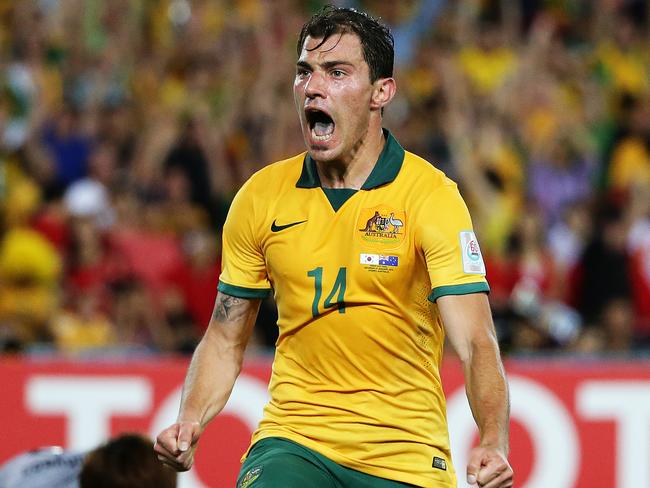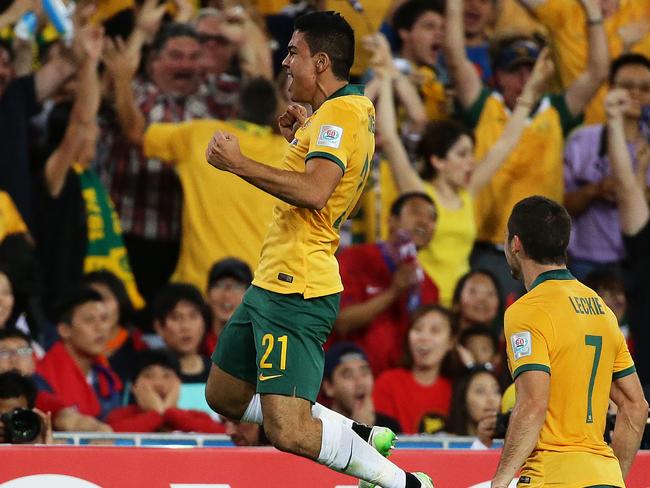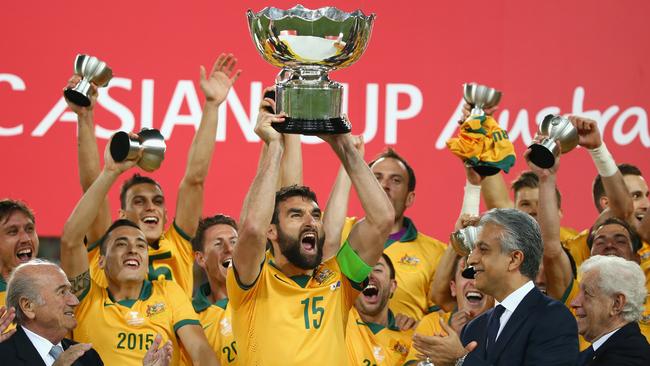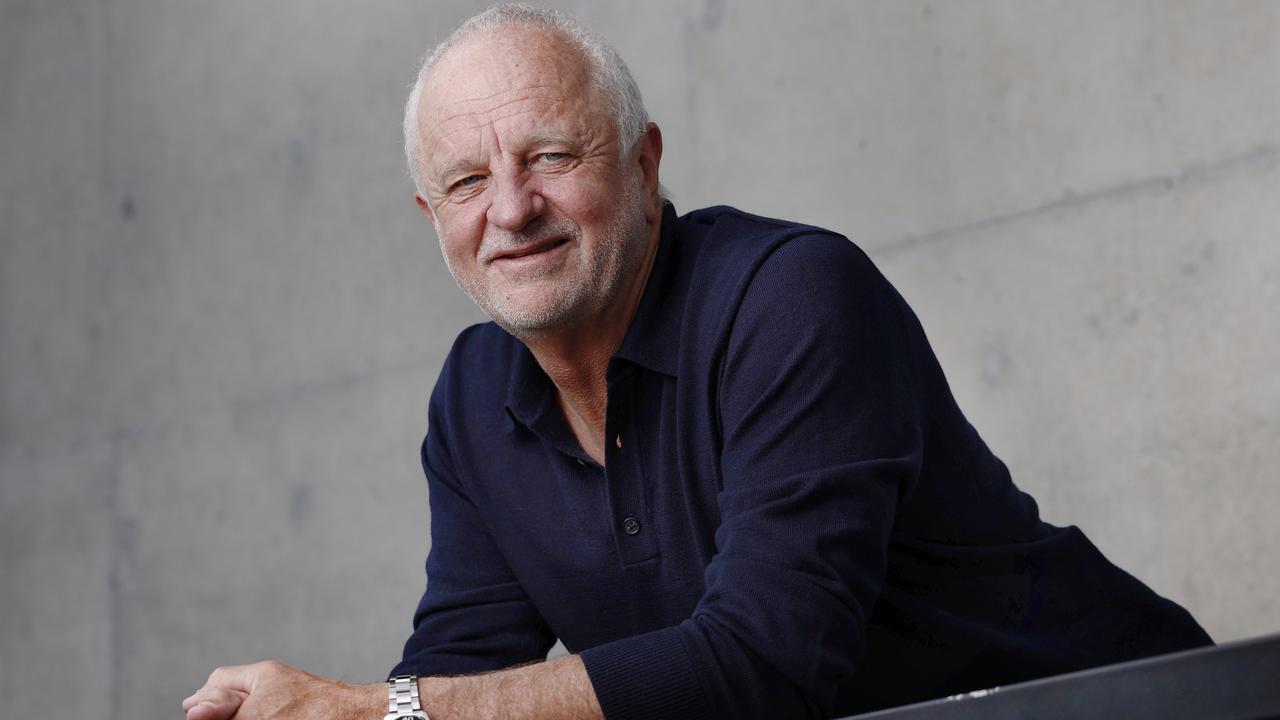Looking back at Australia’s historic 2015 Asian Cup victory
Ahead of the 2015 Asian Cup, the Socceroos were ranked 100th in the world and had won just one of 11 games. But resilience built before the tournament and momentum during it saw them pull off a historic victory.
Football
Don't miss out on the headlines from Football. Followed categories will be added to My News.
James Troisi’s extra-time winner will forever be contained inside the head of Ange Postecoglou.
He’s never watched a replay of the 2015 Asian Cup final, nor does he intend to.
The moment still holds a certain hue in his memory, and he’ll be damned if his nitpicky tactical brain ruins it.
“I just think it will spoil it because I’ll start picking at it thinking ‘we could have done this or that better’,” Postecoglou tells The Sunday Telegraph.
“With all the grand finals and big games I’ve been involved in I just don’t watch them back.
“I’ve got a really good memory of that whole tournament and that day, and if I go back and start looking at it I’ll start being critical of things I did or things the players did, and I don’t want to do that.
“It would just spoil the experience for me.”
The former Socceroos coach lived and breathed every crest and dip in January four years ago, culminating in that breathless 2-1 win over South Korea at ANZ Stadium.

That night, as the clock ticked past 120 minutes and the final whistle blew, the nervous pitchside pacing ceased and Postecoglou was suddenly striding the sideline and punching the air, arms fanning the cheers of nearly 80,000 witnessing history.
Nine years after joining the Asian Football Confederation, the Socceroos were kings of Asia.
Tim Cahill afterwards described it as “a tournament we were never supposed to win”.
To this day, that’s part of what made the achievement so remarkable.
Appointed 14 months prior in urgent circumstances after Holger Osieck’s side bled too many goals for the German to be deemed a viable 2014 World Cup overseer, Postecoglou moved swiftly to cull the veterans who’d steered them to qualification and dragged down the average age from over 30 to 26.

This was a new breed he hoped would “excite the country” once more and rid the Australian game of its so-called inferiority complex.
Postecoglou openly loathed the country’s underdog tag, and determined that if attractive football was played, winning would be the natural conclusion.
Problem was, the Socceroos had won only one game from their last 11, and many observers wrote off the 100th-ranked nation as a serious contender despite the home advantage, reasoning a young, in-transition squad lacked the necessary experience.

“We’d gone to the World Cup and some of our players were really tested, guys like Maty Ryan and others who we just threw in there,” Postecoglou says.
“We came through that not too bad but obviously with no results. We hit the road after that, I purposely didn’t want us to play at home.
“I think that whole calendar year we won one game, and leading into it there wasn’t a great deal of optimism outside the camp, but I just felt we were building something in the camp.”
Australia opened the tournament against Kuwait at AAMI Park, going down a goal inside eight minutes before regrouping to win 4-1.

“I just sense even from that first game ... you kind of go ‘okay, we’ve had one win all year and you go a goal down in the first game, this will be a test as to whether the method we’ve used to get to this spot has been good.
“We didn’t miss a beat for the rest of the tournament. It was a really pivotal time.
“In my mind, I purposely gave the guys a really hard 12 months, we hadn’t played a home game that whole 12 months. That was to build resilience and for them not to let whatever hiccup may come our way – because there was always going to be a hiccup – to just roll with the punches.

“And the way they reacted, it was almost the perfect start for us conceding that goal because that just built resilience and belief from that moment on that we were onto something special.”
Australia came second in the group behind South Korea, losing 1-0 to the side they’d go on to conquer in the decider after seeing off China and the United Arab Emirates in the quarters and semis.

The final, of course, had to be won twice, after Massimo Luongo opened the scoring in the 45th minute only for Son Heung-min, then a teammate of Robbie Kruse at Bayer Leverkusen, to negate it in stoppage-time.
The rest is history. Tomi Juric scrapping for the ball on the byline for what seemed an age, wriggling free and looking for Troisi, who was on hand to bury his spilled cross.
Man of the match went to defender Trent Sainsbury, then 22 and with less than 10 caps.
“It just felt like we were never going to lose,” Sainsbury recalls.
“We lost to South Korea, and the funny thing is I thought that was the turning point.
“As soon as we lost that game I said ‘nah, we’ll win this trophy now’. It just rolled on from there. And being in Australia made it extra special.”

The top honour went to Luongo, the fresh-faced midfielder named player of the tournament.
“It was a big thing for me in my international career,” Luongo says.
“That put me on the map.”
Luongo and Sainsbury, neither far off 50 caps now, and both are quick to point out they don’t linger on the past, only look to the future and what awaits in the Cup defence starting in the UAE on Sunday night.
That’s one of Graham Arnold’s main mantras in camp, particularly for the eight players remaining from the squad that lifted the trophy the new coach is now attempting to defend.
“This is a bit of a different lead-up,” Sainsbury said.
“We’re winning or dominating pretty much every game.”


